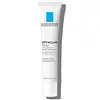What's inside
What's inside
 Key Ingredients
Key Ingredients

 Benefits
Benefits

 Concerns
Concerns

 Ingredients Side-by-side
Ingredients Side-by-side

Benzoyl Peroxide 5.5%
Water
Skin ConditioningIsostearyl Alcohol
EmollientGlycerin
HumectantPentylene Glycol
Skin ConditioningSilica
AbrasiveCarbomer
Emulsion StabilisingCapryloyl Salicylic Acid
ExfoliatingPotassium Hydroxide
BufferingTocopheryl Acetate
AntioxidantAcrylates/C10-30 Alkyl Acrylate Crosspolymer
Emulsion StabilisingDisodium EDTA
Epilobium Angustifolium Flower/Leaf/Stem Extract
Skin ConditioningWater
Skin ConditioningGlycerin
HumectantSalicylic Acid
MaskingIsononyl Isononanoate
EmollientButylene Glycol
HumectantKaolin
AbrasiveZinc Sulfate
AntimicrobialBifida Ferment Lysate
Skin ConditioningSodium Hydroxide
BufferingSodium Polyacrylate
AbsorbentSodium Hyaluronate
HumectantSodium Benzoate
MaskingPhenoxyethanol
PreservativeAscorbyl Glucoside
AntioxidantCaprylyl Glycol
EmollientHydrolyzed Algin
Trisodium Ethylenediamine Disuccinate
Biosaccharide Gum-1
HumectantAcrylates/C10-30 Alkyl Acrylate Crosspolymer
Emulsion StabilisingParfum
MaskingWater, Glycerin, Salicylic Acid, Isononyl Isononanoate, Butylene Glycol, Kaolin, Zinc Sulfate, Bifida Ferment Lysate, Sodium Hydroxide, Sodium Polyacrylate, Sodium Hyaluronate, Sodium Benzoate, Phenoxyethanol, Ascorbyl Glucoside, Caprylyl Glycol, Hydrolyzed Algin, Trisodium Ethylenediamine Disuccinate, Biosaccharide Gum-1, Acrylates/C10-30 Alkyl Acrylate Crosspolymer, Parfum
 Reviews
Reviews

Ingredients Explained
These ingredients are found in both products.
Ingredients higher up in an ingredient list are typically present in a larger amount.
Acrylates/C10-30 Alkyl Acrylate Crosspolymer is a synthetic polymer. It is used to thicken and improve the texture of products. Due to its properties, it can prevent water and oil ingredients from separating.
Glycerin is already naturally found in your skin. It helps moisturize and protect your skin.
A study from 2016 found glycerin to be more effective as a humectant than AHAs and hyaluronic acid.
As a humectant, it helps the skin stay hydrated by pulling moisture to your skin. The low molecular weight of glycerin allows it to pull moisture into the deeper layers of your skin.
Hydrated skin improves your skin barrier; Your skin barrier helps protect against irritants and bacteria.
Glycerin has also been found to have antimicrobial and antiviral properties. Due to these properties, glycerin is often used in wound and burn treatments.
In cosmetics, glycerin is usually derived from plants such as soybean or palm. However, it can also be sourced from animals, such as tallow or animal fat.
This ingredient is organic, colorless, odorless, and non-toxic.
Glycerin is the name for this ingredient in American English. British English uses Glycerol/Glycerine.
Learn more about GlycerinWater. It's the most common cosmetic ingredient of all. You'll usually see it at the top of ingredient lists, meaning that it makes up the largest part of the product.
So why is it so popular? Water most often acts as a solvent - this means that it helps dissolve other ingredients into the formulation.
You'll also recognize water as that liquid we all need to stay alive. If you see this, drink a glass of water. Stay hydrated!
Learn more about Water